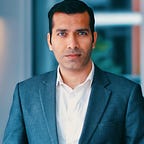Who wants to be the cow that couldn’t moo-ve?
A short answer, no one; and here’s how you can achieve it.
The fact remains — the world we live in today is flooded with data and information. It is beyond a point where figuring out what is right and what isn’t takes more energy than acting on it. A lot of us give in to this hassle and fall back on defaults.
You don’t want to do that. After all, no one wants to be the cow that couldn’t moo-ve!
We need to learn better ways to harness this without undermining our ability to think for ourselves.
The first principle’s approach is a two-step process. The first step is a detailed analysis, and the second is a careful synthesis of analyzed information.
It’s not a ground-breaking idea. More than 2,000 years ago, Aristotle, a Greek philosopher, coined this term. He believed that we learn more about something by understanding its fundamental principles. That is how scientists and almost all better engineers think.
The first principles are the most fundamental building blocks of an idea. Like the most indivisible parts that we know to be true. They are just undeniable basic truths.
Think about it as dissecting a subject into its smallest parts to gain knowledge. Then we organize and categorize that knowledge by reasoning, which builds our experience. This cycle — of seeking knowledge through experience and reasoning is the first principle-based thinking. We must focus on building experience and reasoning capacity.
The cycle — of seeking knowledge through experience and reasoning is the first principle-based thinking.
Think about a cook and a chef. Under normal circumstances, both follow a recipe to make a dish. Many people think both are the same. But if the cook loses his recipe, he will be in trouble. However, the chef will easily find a way out because he knows the basic principles of food and cooking. And with that knowledge, he can work without a recipe. What’s more, he can also invent new dishes or recipes based on the knowledge -base he built.
The good thing is, learning to think on the first principles also helps in improving communication. It is possible because using this mindset and thinking process, you can easily rebuild the idea in your head into someone else’s. It is one of the reasons why teachers are good at the first principle thinking as they build the ideas and reasoning from the ground up.
If you think on the first principle basis, you can better understand things and fix them if something goes wrong. That is because you will have a better understanding of how they work in the first place.
The general idea is to create a mental hierarchy whenever you learn new things or concepts. Create the hierarchy of concepts, ideas, and knowledge with proper reasoning. Use ‘why’ and ‘how’ type questions to dig deeper and to build a body of knowledge for yourself.
Use ‘why’ and ‘how’ type questions and build a body of knowledge for yourself.
When you start getting better at the first principle thinking, you will feel the clarity about that subject. The confusion will start to fade away. And no one will be able to confuse you or misinform you easily after that.
The first principles always stand tall in the wake of misunderstanding, confusion, misinformation, disinformation, and many other similar things we face today, whether online or offline.
The thing is, it is not just a tool for philosophers or CEOs. If you feel deeply about a problem and want to solve it, you should consider it. If you are serious about making a positive change, embrace the first principles approach: innovation, business, or life’s toughest problems. The first principles will help you get unstuck.
They say that winners don’t do different things; they do things differently. And with this approach, you can learn to do things differently at such a deeper and profound level that people cannot ignore the genius in you.
So, what do you say?
Winners don’t do different things; they do things differently, and to do that, you must learn to think for yourself!
PS: A longer version of this article is available on my website here: https://www.anandtamboli.com/blog?title=the-cow-that-couldnt-moo.
PS: If you’d rather watch an entertaining conversation amongst me, myself, and myself, then check this out: https://www.youtube.com/watch?v=cOML1omSN9Q.
